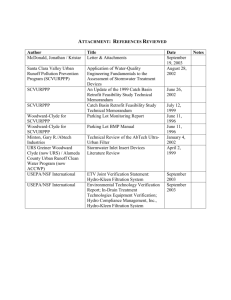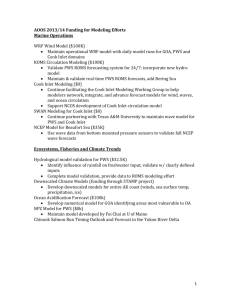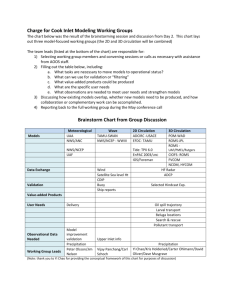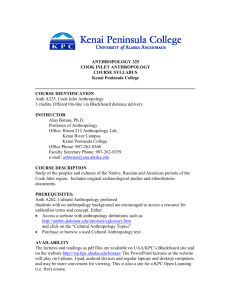Flow, Water-Quality, and Biological Conditions at Fixed Sites in the
advertisement
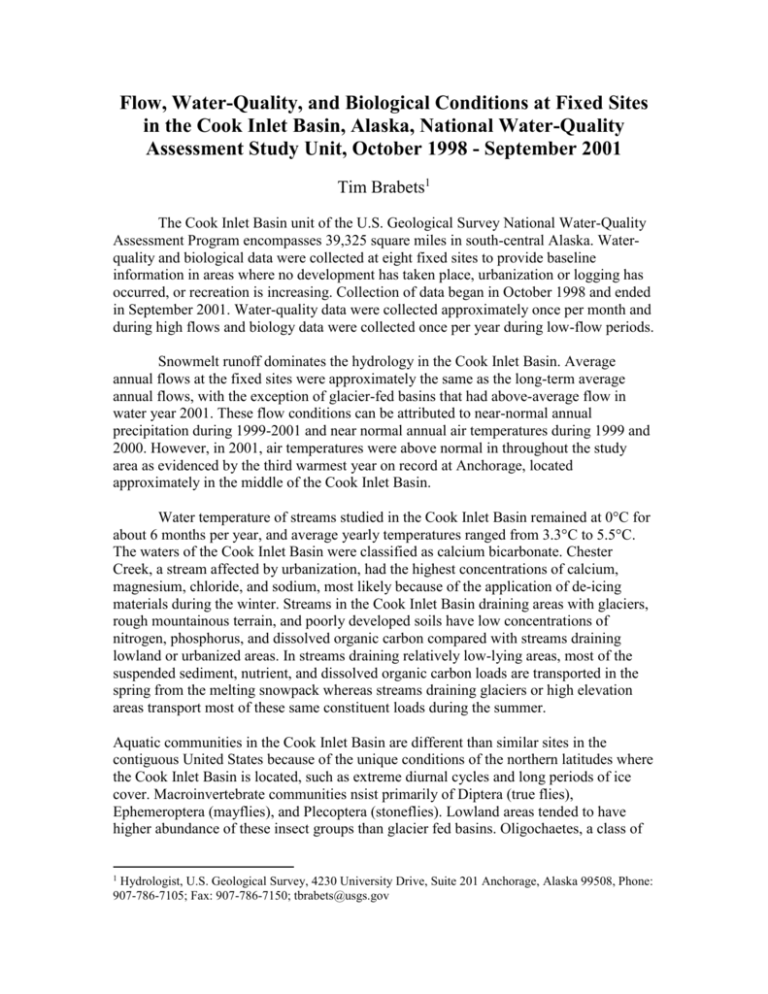
Flow, Water-Quality, and Biological Conditions at Fixed Sites in the Cook Inlet Basin, Alaska, National Water-Quality Assessment Study Unit, October 1998 - September 2001 Tim Brabets1 The Cook Inlet Basin unit of the U.S. Geological Survey National Water-Quality Assessment Program encompasses 39,325 square miles in south-central Alaska. Waterquality and biological data were collected at eight fixed sites to provide baseline information in areas where no development has taken place, urbanization or logging has occurred, or recreation is increasing. Collection of data began in October 1998 and ended in September 2001. Water-quality data were collected approximately once per month and during high flows and biology data were collected once per year during low-flow periods. Snowmelt runoff dominates the hydrology in the Cook Inlet Basin. Average annual flows at the fixed sites were approximately the same as the long-term average annual flows, with the exception of glacier-fed basins that had above-average flow in water year 2001. These flow conditions can be attributed to near-normal annual precipitation during 1999-2001 and near normal annual air temperatures during 1999 and 2000. However, in 2001, air temperatures were above normal in throughout the study area as evidenced by the third warmest year on record at Anchorage, located approximately in the middle of the Cook Inlet Basin. Water temperature of streams studied in the Cook Inlet Basin remained at 0°C for about 6 months per year, and average yearly temperatures ranged from 3.3°C to 5.5°C. The waters of the Cook Inlet Basin were classified as calcium bicarbonate. Chester Creek, a stream affected by urbanization, had the highest concentrations of calcium, magnesium, chloride, and sodium, most likely because of the application of de-icing materials during the winter. Streams in the Cook Inlet Basin draining areas with glaciers, rough mountainous terrain, and poorly developed soils have low concentrations of nitrogen, phosphorus, and dissolved organic carbon compared with streams draining lowland or urbanized areas. In streams draining relatively low-lying areas, most of the suspended sediment, nutrient, and dissolved organic carbon loads are transported in the spring from the melting snowpack whereas streams draining glaciers or high elevation areas transport most of these same constituent loads during the summer. Aquatic communities in the Cook Inlet Basin are different than similar sites in the contiguous United States because of the unique conditions of the northern latitudes where the Cook Inlet Basin is located, such as extreme diurnal cycles and long periods of ice cover. Macroinvertebrate communities nsist primarily of Diptera (true flies), Ephemeroptera (mayflies), and Plecoptera (stoneflies). Lowland areas tended to have higher abundance of these insect groups than glacier fed basins. Oligochaetes, a class of 1 Hydrologist, U.S. Geological Survey, 4230 University Drive, Suite 201 Anchorage, Alaska 99508, Phone: 907-786-7105; Fax: 907-786-7150; tbrabets@usgs.gov worms, was the dominant species at Chester Creek, the urbanized stream, indicating poor water quality conditions at this site.

